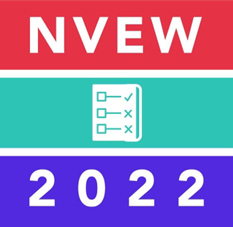 NationalVoterEducationWeek.org
NationalVoterEducationWeek.org
We’re more likely to vote, and vote confidently, if we know what’s on our ballot. Learn what’s on your ballot by getting to know your options for candidates, constitutional amendments, local referendums, and ballot initiatives.
What’s on your ballot? Ballot options range from local offices like school boards, to state roles like governor, to federal ones like US Senators and members of the US House of Representatives. State and local elections can shape your life much more immediately than federal choices, so make sure you vote in every national, state, and local election! You might have the chance to shape policy even more directly through ballot measures and referendums.
Many different elected positions might be on your ballot, and might include: the US Senate, the US House of Representatives, Governor, Lieutenant Governor, Secretary of State, and Attorney General, State Supreme Court Justices, Comptroller, Treasurer, State Senators, State Legislators, School board, Mayor, town or city council members, county commissioner, etc.
Elections are also moments for big policy decisions specific to your community, county, or state. They can be called ballot measures, referenda, constitutional amendments, propositions, and more. These issues and options are typically direct policy decisions, and can have a profound impact on your community. Make your voice heard!
Ready to find out what’s on your ballot? Go to Ballotpedia.org to see what’s on your ballot, or visit your local elections office to see a sample ballot for your community to know exactly what’s on your ballot, and how it will look, before your vote. Bring your sample ballot with you to the voting booth as a guide on election day, there’s no need to make guesses about legal or legislative jargon!
For any issues, questions, or concerns about ballot inaccuracies, call or contact the Election Protection Hotline at 866-OUR-VOTE or tweet @866OURVOTE.

